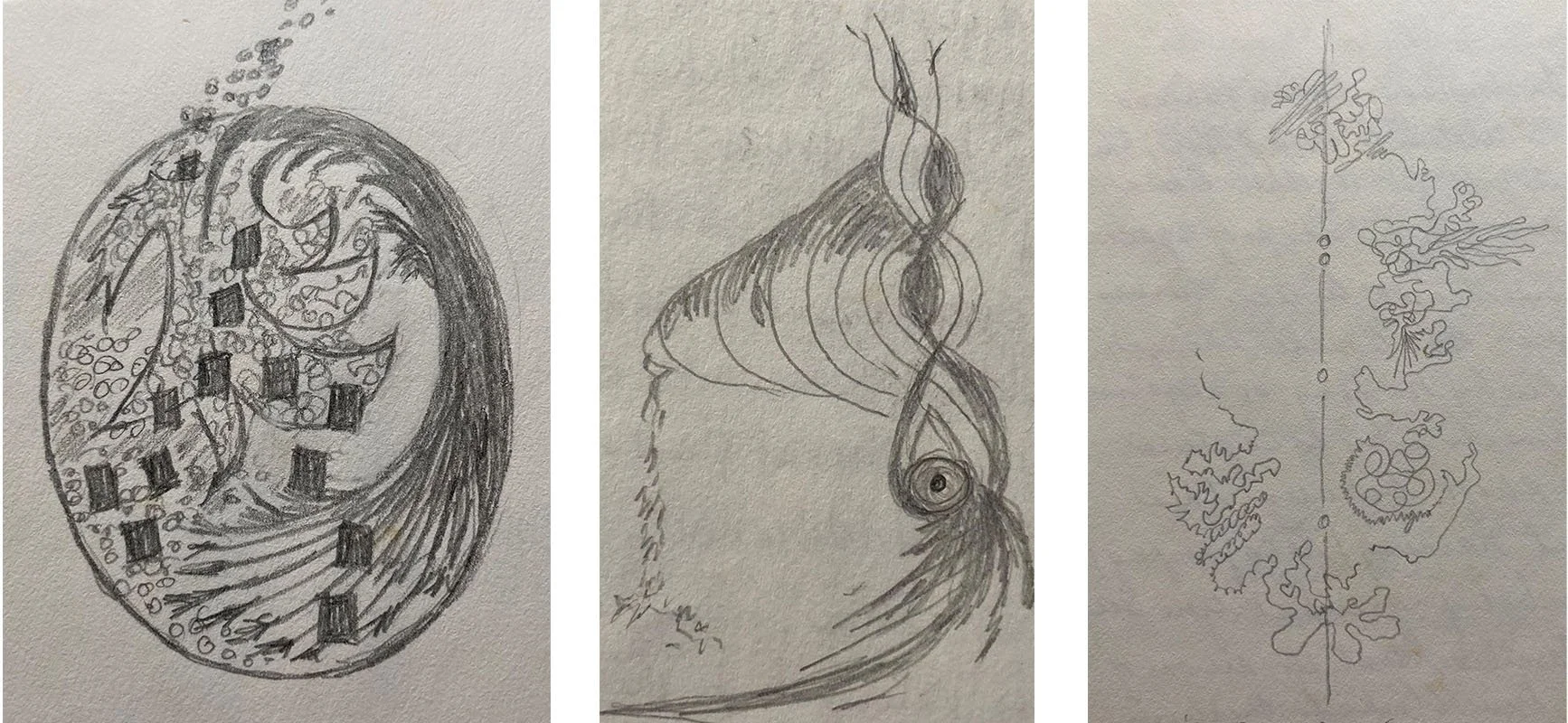Painting What You Can’t See
I’ll start at the beginning:
Annie Dillard, in her nature writing back in the 1970’s, described each day as a god. I loved her writing enough to read her books several times, getting amazed and lost in the way she could wrap words around the commonplace of our landscapes, searching for cracks into the unknown.
Each day is a god? Such an elaborate metaphor. It resonated, but how exactly, I wasn’t sure. I knew that the world was in constant movement and was also morphing one state into another, and all the named objects that I was seeing could easily distract me from the notion that there was more there than was visible.
I chart my interest in visual abstraction back to these readings in the ‘70’s. My sketch book was full of drawings that tried to make other senses visual, to make anything that I couldn’t see into a visual of the way it affected me, like smells or sounds or personalities. This was truly a search, knowing full well that I was a bit obsessed with something that was likely impossible. What does a breath look like, anyway? Or the space between breaths? I was so sure that there was more there, in the way of energies between or heat underneath:
These are three conversations with three different people
I have a vivid memory from some time in the 1990’s while we were living on the Cape:
One evening I sat in my car in low lamplight, waiting to pick up my daughter at her friend’s home. I don’t recall what I was thinking about, probably just listening to crickets. And when I turned the headlights on, the woods in front of me jumped into a flat surface, with the tree trunks and the spaces between the trunks just seen as shapes with no sense of varying depths. I was totally confused about what I was seeing. And even though it all quickly came into focus again, I was left with the permanent possibility of a shifted vision just around the corner, over the hill, under different light or under surface layers.
So, when I later finally picked up a paint brush, despite my love of trees and soil and color and the way light passed through and between shapes, despite being in love with all that is seen, I still was quickened by my sense of the unseen. And so it was that I gradually discovered the second voice that I spoke of in the first newsletter that would keep me happily making random lines and shapes, uncorrected, until something reached out and said, Wait, there may be something here. Wait, that makes me smile - why? - keep exploring!
In the “early” work (none of it was long ago - we’re talking 2014-18), I found a reappearing theme of the sense of “terra firma and beyond”. I’ll show you some of these. Do they look like a safe, firm place to stand, looking out into the Great Unknown?
#4-2015. 15” x 20”. Acrylic on paper
#6-2016. 15” x 20”. Acrylic on paper
#30-2018. 11 ¼” x 11 ¼”. Oil on paper
That was a beginning.
I must admit, I am regularly confused with what I’m seeing in the paintings that I like. And besides not knowing where I’m going with the exploration, I often don’t know where I’ve come, either. But just a hint of recognition has, and will probably always, keep me searching.
Thank you for joining me again!
I hope to send:
A note each month with concepts about my painting that I think might interest you.
Along with an occasional reprint of a Full Belly Farm newsletter that was fun (a reader suggested this, an example of how your comments can guide the newsletter).
And any current news, such as gallery shows (see below).
I am including here a photo from the Saint Francis Gallery exhibit, which is up and sailing right now. Hours: Friday to Sunday, 10 am-5 pm.
Phil, the gallery owner, can be contacted at: ppryjma70@gmail.com
Phone: 413-717-5199
The website is still being built, but we’re gaining on its completion. In early June I hope to put it out into public view. Wahoo!
If you would like to no longer receive these newsletters, you can unsubscribe using the link below.
My best to you all,




